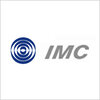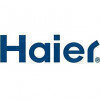


i
Blue
Star
Work with us
![]()
Filter interviews by
Blue Star Safety Officer Interview Questions and Answers
10 Interview questions
Risk assessment involves identifying hazards, evaluating risks, and implementing control measures to ensure safety.
Identify hazards: Recognize potential sources of harm, such as machinery, chemicals, or work practices.
Evaluate risks: Assess the likelihood and severity of harm from identified hazards, using a risk matrix.
Implement control measures: Develop strategies to eliminate or reduce risks, such as safety tra...
ISO stands for International Organization for Standardization, which develops and publishes international standards.
Founded in 1947, ISO is an independent, non-governmental international organization.
ISO standards cover various fields, including quality management (ISO 9001) and environmental management (ISO 14001).
ISO ensures consistency and quality across products and services globally.
ISO standards are develope...
The over hoist limit switch prevents a hoist from lifting loads beyond a safe height, ensuring operational safety.
Acts as a safety mechanism to stop the hoist when the load reaches a predetermined height.
Prevents potential accidents or equipment damage by avoiding overextension.
Commonly used in cranes and elevators to ensure safe operation.
Example: In a construction crane, if the load reaches the maximum height, t...
Fire extinguishers are classified based on the type of fire they are designed to combat, ensuring effective fire suppression.
Class A: For ordinary combustibles like wood and paper (e.g., water extinguishers).
Class B: For flammable liquids such as gasoline and oil (e.g., foam extinguishers).
Class C: For electrical fires (e.g., CO2 extinguishers).
Class D: For combustible metals like magnesium (e.g., dry powder extin...
Fires are classified into different classes based on their fuel sources and characteristics.
Class A: Ordinary combustibles (wood, paper, cloth). Example: burning paper.
Class B: Flammable liquids and gases (gasoline, oil). Example: a spilled gasoline fire.
Class C: Electrical fires (live electrical equipment). Example: a fire caused by faulty wiring.
Class D: Combustible metals (magnesium, titanium). Example: a fire ...
Hazards can be classified into categories like physical, chemical, biological, ergonomic, and psychosocial.
Physical hazards: Examples include slips, trips, and falls.
Chemical hazards: Exposure to toxic substances like asbestos or pesticides.
Biological hazards: Risks from bacteria, viruses, or mold.
Ergonomic hazards: Poor workstation design leading to repetitive strain injuries.
Psychosocial hazards: Stress from wor...
There are five main types of fire extinguishers: water, foam, dry powder, CO2, and wet chemical.
Water fire extinguishers are suitable for Class A fires involving solid materials like wood or paper.
Foam fire extinguishers are effective for Class A and B fires involving flammable liquids like petrol or oil.
Dry powder fire extinguishers are suitable for Class A, B, and C fires involving flammable gases like propane.
C...
Fire is a rapid chemical reaction that releases heat, light, and various gases.
Fire is a result of the combustion process, where a fuel source combines with oxygen in the presence of heat to produce flames.
It requires three elements to sustain: fuel, oxygen, and heat.
Examples of fuel sources include wood, paper, gasoline, and natural gas.
Fire can spread rapidly and pose a significant risk to life and property if n...
Permits ensure safety in hazardous work environments, regulating activities like hot work and confined space entry.
Hot Work Permit: Required for activities like welding or cutting that can ignite flammable materials.
Confined Space Permit: Needed for work in areas with limited entry and exit, ensuring safety measures are in place.
Electrical Work Permit: Ensures safety protocols are followed when working on or near ...
A Safety Officer ensures workplace safety by implementing policies, conducting training, and monitoring compliance with regulations.
Conduct regular safety inspections to identify hazards, e.g., checking for proper use of personal protective equipment (PPE).
Develop and implement safety training programs for employees, such as fire safety drills and emergency response training.
Investigate accidents and incidents to ...
Blue Star Safety Officer Interview Experiences
3 interviews found
I applied via Approached by Company
(4 Questions)
- Q1. Ehs longform please let me
- Q2. What is fire please tell me
- Ans.
Fire is a rapid chemical reaction that releases heat, light, and various gases.
Fire is a result of the combustion process, where a fuel source combines with oxygen in the presence of heat to produce flames.
It requires three elements to sustain: fuel, oxygen, and heat.
Examples of fuel sources include wood, paper, gasoline, and natural gas.
Fire can spread rapidly and pose a significant risk to life and property if not co...
- Q3. How many types of fire extinguisher
- Ans.
There are five main types of fire extinguishers: water, foam, dry powder, CO2, and wet chemical.
Water fire extinguishers are suitable for Class A fires involving solid materials like wood or paper.
Foam fire extinguishers are effective for Class A and B fires involving flammable liquids like petrol or oil.
Dry powder fire extinguishers are suitable for Class A, B, and C fires involving flammable gases like propane.
CO2 fi...
- Q4. 4 types types
- Ans.
The 4 types of safety hazards are physical, chemical, biological, and ergonomic.
Physical hazards include slips, trips, falls, and machinery accidents.
Chemical hazards involve exposure to harmful substances like gases, liquids, or solids.
Biological hazards come from exposure to viruses, bacteria, fungi, and other living organisms.
Ergonomic hazards result from poor workstation design, repetitive tasks, or improper liftin...
Very nice I wood like
I appeared for an interview before Apr 2024, where I was asked the following questions.
- Q1. What is TBSC ?
- Q2. Oxygen level required confined space
- Ans.
Confined spaces require oxygen levels between 19.5% and 23.5% for safe entry and work.
Oxygen levels below 19.5% can lead to asphyxiation.
Oxygen levels above 23.5% increase fire and explosion risks.
Regular monitoring of oxygen levels is essential in confined spaces.
Examples of confined spaces include tanks, silos, and tunnels.
- Q3. Procedure to make Risk assessment
- Ans.
Risk assessment involves identifying hazards, evaluating risks, and implementing control measures to ensure safety.
Identify hazards: Recognize potential sources of harm, such as machinery, chemicals, or work practices.
Evaluate risks: Assess the likelihood and severity of harm from identified hazards, using a risk matrix.
Implement control measures: Develop strategies to eliminate or reduce risks, such as safety training...
- Q4. ISO full form
- Ans.
ISO stands for International Organization for Standardization, which develops and publishes international standards.
Founded in 1947, ISO is an independent, non-governmental international organization.
ISO standards cover various fields, including quality management (ISO 9001) and environmental management (ISO 14001).
ISO ensures consistency and quality across products and services globally.
ISO standards are developed thr...
- Q5. Classified the fire
- Ans.
Fires are classified into different classes based on their fuel sources and characteristics.
Class A: Ordinary combustibles (wood, paper, cloth). Example: burning paper.
Class B: Flammable liquids and gases (gasoline, oil). Example: a spilled gasoline fire.
Class C: Electrical fires (live electrical equipment). Example: a fire caused by faulty wiring.
Class D: Combustible metals (magnesium, titanium). Example: a fire invol...
- Q6. Classified the hazard
- Ans.
Hazards can be classified into categories like physical, chemical, biological, ergonomic, and psychosocial.
Physical hazards: Examples include slips, trips, and falls.
Chemical hazards: Exposure to toxic substances like asbestos or pesticides.
Biological hazards: Risks from bacteria, viruses, or mold.
Ergonomic hazards: Poor workstation design leading to repetitive strain injuries.
Psychosocial hazards: Stress from workplac...
- Q7. Classified the fire extinguishers
- Ans.
Fire extinguishers are classified based on the type of fire they are designed to combat, ensuring effective fire suppression.
Class A: For ordinary combustibles like wood and paper (e.g., water extinguishers).
Class B: For flammable liquids such as gasoline and oil (e.g., foam extinguishers).
Class C: For electrical fires (e.g., CO2 extinguishers).
Class D: For combustible metals like magnesium (e.g., dry powder extinguish...
- Q8. The function of the over hoist limit switch
- Ans.
The over hoist limit switch prevents a hoist from lifting loads beyond a safe height, ensuring operational safety.
Acts as a safety mechanism to stop the hoist when the load reaches a predetermined height.
Prevents potential accidents or equipment damage by avoiding overextension.
Commonly used in cranes and elevators to ensure safe operation.
Example: In a construction crane, if the load reaches the maximum height, the sw...
- Q9. Types of permit
- Ans.
Permits ensure safety in hazardous work environments, regulating activities like hot work and confined space entry.
Hot Work Permit: Required for activities like welding or cutting that can ignite flammable materials.
Confined Space Permit: Needed for work in areas with limited entry and exit, ensuring safety measures are in place.
Electrical Work Permit: Ensures safety protocols are followed when working on or near elect...
- Q10. Responsibility of safety officer
- Ans.
A Safety Officer ensures workplace safety by implementing policies, conducting training, and monitoring compliance with regulations.
Conduct regular safety inspections to identify hazards, e.g., checking for proper use of personal protective equipment (PPE).
Develop and implement safety training programs for employees, such as fire safety drills and emergency response training.
Investigate accidents and incidents to deter...
Interview Preparation Tips
I applied via Referral and was interviewed before Oct 2022. There were 3 interview rounds.

(2 Questions)
- Q1. Previous experience
- Q2. Education background
(1 Question)
- Q1. Knowledge about safety
Top trending discussions






Interview questions from similar companies

I appeared for an interview before Feb 2024.
(1 Question)
- Q1. Roles and responsibilities of the Safety Officer
- Ans.
Safety Officer is responsible for ensuring workplace safety, implementing safety procedures, conducting safety inspections, and training employees on safety protocols.
Develop and implement safety policies and procedures
Conduct regular safety inspections and audits
Train employees on safety protocols and procedures
Investigate accidents and incidents to determine root causes
Ensure compliance with safety regulations and st...

(1 Question)
- Q1. Safety roles and responsibilities
Interview Preparation Tips

I applied via Naukri.com and was interviewed before Aug 2020. There were 5 interview rounds.
Interview Questionnaire
1 Question
- Q1. Various technical questions.
Interview Preparation Tips


(2 Questions)
- Q1. What is the Safety
- Ans.
Safety refers to the measures and precautions taken to prevent accidents, injuries, and hazards in a particular environment.
Safety involves identifying potential risks and implementing strategies to mitigate them.
It includes creating and enforcing safety policies and procedures.
Safety officers conduct inspections, train employees, and investigate incidents.
Examples of safety measures include wearing personal protective...
- Q2. What is the risk
- Ans.
The risk refers to the potential for harm or loss that may arise from a hazardous situation or activity.
Risk is an inherent part of any workplace or activity and must be identified, assessed, and managed.
It involves evaluating the likelihood and severity of potential hazards and taking appropriate measures to control or mitigate them.
Examples of risks in a safety officer role may include workplace accidents, exposure t...
Interview Preparation Tips

I applied via Naukri.com and was interviewed in Aug 2021. There were 4 interview rounds.
Interview Questionnaire
1 Question
- Q1. Height work safety, electrical safety, past work experience etc.
Interview Preparation Tips

I applied via Walk-in and was interviewed before Sep 2020. There were 3 interview rounds.
Interview Questionnaire
1 Question
- Q1. What is safety
- Ans.
Safety is the state of being protected from harm, danger, or injury.
Safety refers to the measures taken to prevent accidents, injuries, and hazards.
It involves identifying and assessing potential risks and implementing strategies to mitigate them.
Safety includes following protocols, guidelines, and regulations to ensure a secure environment.
Examples of safety measures include wearing personal protective equipment, cond...
Interview Preparation Tips

Safety Officer Interview Questions & Answers
Indian Molasses Companyposted on 15 May 2022
I applied via Campus Placement and was interviewed before May 2021. There were 2 interview rounds.

(1 Question)
- Q1. Questions related to Basic Safety and Fire Safety
Interview Preparation Tips
Blue Star Interview FAQs
Tell us how to improve this page.
Blue Star Interviews By Designations
- Blue Star Assistant Manager Interview Questions
- Blue Star Senior Engineer Interview Questions
- Blue Star Site Engineer Interview Questions
- Blue Star Service Engineer Interview Questions
- Blue Star Safety Officer Interview Questions
- Blue Star AC Technician Interview Questions
- Blue Star Graduate Engineer Trainee (Get) Interview Questions
- Blue Star AIR Condition Technician Interview Questions
- Show more
Interview Questions for Popular Designations
Overall Interview Experience Rating
based on 4 interview experiences
Difficulty level
Duration
Interview Questions from Similar Companies
Blue Star Safety Officer Reviews and Ratings
based on 39 reviews
Rating in categories
|
Assistant Manager
690
salaries
| ₹8.7 L/yr - ₹15 L/yr |
|
Senior Engineer
338
salaries
| ₹4 L/yr - ₹10 L/yr |
|
Deputy Manager
278
salaries
| ₹13.1 L/yr - ₹23 L/yr |
|
AC Technician
198
salaries
| ₹1.5 L/yr - ₹5 L/yr |
|
Safety Officer
156
salaries
| ₹2.2 L/yr - ₹6 L/yr |

OPPO

LG Electronics

Bajaj Electricals

Voltas
- Home >
- Interviews >
- Blue Star Interview Questions












